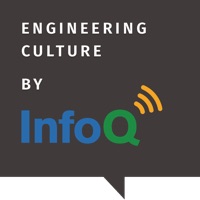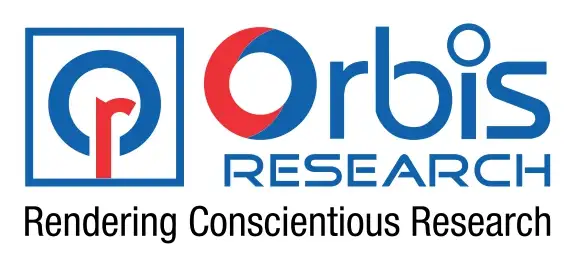Article originally posted on InfoQ. Visit InfoQ
Transcript
Gelobter: What I want to do here is talk a little bit about examples of how we really and truly can harness technology to solve what had been previously thought of as intractable problems. You can do that in public sector, but you can also do it in private sector. What I’d love for you all to take away from this is the idea of inspiration and aspiration, and how do you make the same practices that we use every day for things that also matter, that can have a significant impact at scale. That’s what we’ll be talking about.
I’m a black woman with a degree in computer science, which unfortunately, makes me somewhat of a unicorn. I’ll talk a little bit more about my background, just because we have gotten a lot more comfortable about talking around issues of race or gender. What we don’t necessarily talk about is socioeconomic differences. I come from a low-income background. While I do have a degree in computer science, it took me 24 years to get it. This is actually what would have been my 20th reunion. I actually graduated class of 2011. Turns out, it’s tough to pay for school when you have to work full time, and put yourself through college. I just want to really just emphasize and highlight all the differences and all the different places and things and identities and intersectionalities that affect how people show up. These are all things of course that you can and should be using as you are thinking about the products that you all are building. I have been fortunate enough to work on some pretty transformative technologies. I was a software engineer on Shockwave. Shockwave, in the early to mid-90s, literally introduced animation, multimedia interactivity to the web, like made the web move. I also helped launched Hulu. I ran digital at BET, the television network, Black Entertainment Television. Then I got a call from the White House, which is quite jarring when you are in the private sector and have always been in private sector. I was fortunate enough to go and serve in the Obama administration as the Chief Digital Service Officer for the U.S. Department of Education. That is making that leap from private sector into public sector. I’m back in private sector now, but still trying to take those same lessons learned and apply them to the scope and the magnitude of what I work on today and try to make systemic change. That’s the dream.
Energy & Impact of a Lean Tech Startup, at Federal Government Scale
Just to give you a little bit of a sense, I’m going to give you some examples of things that we’ve implemented both in the public sector, but then also private. What happened was in federal government, Todd Park was the CTO, I think at the time, of the United States of America, and so, President Obama, the idea is, if I can sit on my sofa in New York, and order a vegan burrito, and mescal, and weed, at this point and have it show up in 10 minutes. If I want to apply for SNAP benefits, for food stamps, it takes months and it’s super onerous, and super painful. How do we apply the things that we know how to do well in private sector, and bring them to the things that are really affecting the people who are most in need. That is the concept of what we tried to do when we were trying to bring best practices from private sector into government. That was the plan. It was actually founded based on healthcare.gov, or actually the failure and then the rescue of healthcare.gov. When healthcare.gov launched, it essentially imploded. The Affordable Care Act, it was a fundamental tenet of the thing that President Obama had successfully done. They implemented it and then it went spectacularly.
What ended up happening was they called in a group of folks from private sector, I think it was only six or seven people. They called it the ad hoc team. When they joined the healthcare.gov, trying to resolve the issue, healthcare.gov was registering 150 people per day. One hundred and fifty people per day were signing up for health insurance. By the time they left, 6 or 7 weeks later, it was 150,000 per day. Over time, tens of millions of people have gotten health care through it. What did they do? The challenge is, of course, there were 48 million people in the U.S. who did not have health care, and 45,000 people were literally dying every year for want of health care. What I’m trying to impress on you all is the difference that you can make using technology, like going from 150 people every day to 150,000 people every day to millions of people. You can literally save people’s lives.
What did the ad hoc team do? When they came on, the application took 76 screens to complete, and it took about 20 minutes to complete an application. By the time they left again, 6 weeks later, it was down to 16 screens, that’s worst case. The average time to complete an application was 9 minutes. The biggest issue was the login system, the authentication system, so identity management. It was responsible for the largest percentage of errors. It originally took $200 million to build, and then $70 million to operate and maintain it. What does that say? The max response time was 5 seconds, forever and ever. It was failing 25% of the time. They rebuilt it. This actually did take 6 months. It cost $4 million. To operate it and keep it running was also $4 million a year. Again, $200 million to $4 million. A max response time of 0.02 seconds. They actually broke the load tester. The error rates went down significantly. Again, that’s what you can do.
Immigration is another great example. Every year, there are 6 million applications on paper. It’s the I-90 form, the ability to renew or replace your Green Card. It was super painful. Again, all paper. Then businesses were popping up because it was so painful, so there were third parties who were like, if you pay me a bunch of money, I’ll do it for you. It should have just worked. USCIS spent 7 years building this process. They tried to digitize it. They spent $1.2 billion doing it. Then there was an independent study that showed that they’d made the process worse than the paper process. You know what they did? They re-upped with the same vendor for a 10-year contract for $2.5 billion. The definition of crazy is doing the same thing over again, expecting a different result. A U.S. Digital Service team went in and basically created a digital version. Again, a short amount of time. They moved from Waterfall to Agile. They moved to the public cloud. They implemented real-time monitoring. They also left the building and did a bunch of user research. Totally changed the game, super successfully, again, in a short amount of time for way less money.
There’s a ton of other examples. One is Veterans’ Medical Health Record interoperability. The challenge is somebody who serves in the military service, the Department of Defense has all their military records. They come back, they’re a veteran, and the systems at VA and at DOD do not talk to each other. There’s all kinds of challenges obviously, that come along with that. I will talk a little bit more about some of these examples. There’s this Police Data Initiative. This was in the wake of Mike Brown and Eric Garner being murdered by cops. There were two folks who worked, they were Presidential Innovation Fellows. They were engineers. They were like, what can we do? There is, in fact, a ton of data that talks about community and police interactions. There are ways to analyze and study them. They actually put this program into place called the Police Data Initiative. The concept was to really aggregate, harness the data, analyze the data, study the data and take learnings from that, so we could start to actually identify where there were problems and where improvements could be made.
Similarly, there is a crowdsourcing program for mapping, put out by the State Department. On April 25, 2015, there was a 7.8 magnitude earthquake that struck Nepal at 11:56 a.m. More than 5000 people died. Again, this idea of like, how can you actually make a difference in people’s lives? Within 48 hours, there was a mapping program where volunteers could come on and actually map, where there were cleared roads, where an ambulance might be able to get through, where a helicopter might be able to land. That is the idea of actually helping the first responders get to where they needed to be with information and data that we could provide them. Those are all a couple of different ways that the federal government has tried to make significant change.
College Scorecard
I specifically work on something called College Scorecard. This was my first project at ed in the White House. A college degree from a 4-year granting institution is worth more than a million dollars over the course of your lifetime. People who have a college degree, the poverty level is about 3%. If you don’t have a college degree, only a high school diploma, it’s about 12%. This makes a really important difference. President Obama had already made an announcement where he wanted to actually make this change. He wanted to help students, their parents make informed choice about college. As opposed to looking at these rating systems, it was like how much money your alumni donates, or how many new buildings a college might have. The idea is to look at metrics of accessibility, affordability, and outcomes. The challenge is, is the people who need most access to the data, who need to figure out the best school that is for them, folks from underserved communities, from low-income backgrounds. They don’t have exposure and access to this information. Their point was to try to get that into their hands however we could.
I started at the White House, I think it was April 6, 2015. President Obama had announced this in August of 2014, and that it was going to be launched by the fall, by September, before the school year started in 2015. I show up in April. Apparently, the Secretary of Ed and the administrator of the U.S. Digital Service had had a meeting with President Obama the week before I joined. President Obama was like, where are we at with College Scorecard? He had gotten out a sheet of paper and was drawing what it needed to be. I was like, I do not know, when designer in chief became the most important role for the President of the United States. I wasn’t at that meeting. All I know is both of them were like, don’t worry about it, Lisa starts next week, she’ll figure it out. Again, no pressure, I got this. The problem is when basically you are handed a drawing or a sketch or a wireframe from the President of the United States, it can be a little bit daunting to say, that’s nice, and put it away. Because, turns out, that’s not how you build a good product.
Part of the reason why this was so daunting is that it was such a cross-departmental, cross-agency collaboration. Whether it was the Department of Education, Federal Student Aid, which is a different department, Domestic Policy Council, the White House, Council of Economic Advisors, Treasury, it was just a lot of folks all up in the mix here. The idea here was to deliver the most reliable and comprehensive dataset ever in the history of the Department of Education. It included all of these things. Question number one, of course, is, what should we actually build, when I put away the president’s wireframe? We of course took a design thinking approach to it. Let me tell you, number one job was to actually explain to the Department of Education what design thinking was, because it’s completely new and foreign. What we were trying to really do is bring new tools, new methodologies into the department. To really help them understand, this is about building a shared understanding of the customer. That this will actually help build things that will result in measurable change. It’s outcomes, not outputs. Doing this will make sure that we build the thing that will work, that will actually help people, not just a thing that we arbitrarily abstractly think should be done.
First Step is Empathize Mode
The first thing we did is empathize. We really did actually do this. First step is empathize. I had been in D.C. a week, and I was like, I don’t know anybody down here that’s got college age kids. How do I talk to some students? How do I talk to some users? I’m breaking out in hives, and somebody on my team is like, we could just go to the mall. I was like, that’s brilliant. The mall where the youth hang out, there’s movies. Of course, they’re just going to be lolling about there, I could hang out. She’s like, or the mall outside the building, the Washington Mall. It worked. We went outside and just accosted people on the Washington Mall coming out of the Air and Space Museum. It turns out, people will just talk to you. Walk up to them with a clipboard, they are absolutely willing to engage in conversation. We didn’t just talk to people who could afford, like there are people there on spring break. We didn’t just talk to people who could afford to come to D.C., on spring break. We went to a public school in Anacostia. We talked to schools in the South Bronx. We talked to schools in the Midwest. We did actually do more than just talk to people on the mall. That was a great first step.
We came back in super excited with what we’d learned, super jazzed, energized. Part of what we wanted to do is bring the department along. Everything was about, how do we help you all see what we’re doing, understand it, explain it? We sat down at the table, and I was like, look at what we did? Before I even got to the learnings, we went out to the mall, we talked to 15 people. They were like, “You talked to more than 9 people? That’s illegal.” I was like, what’s happening? There’s apparently a thing called the Paperwork Reduction Act. The attempt is to actually not get more information from citizens than is needed. People read it and interpret it differently. Some people read it like you weren’t allowed to ask the same set of questions from more than 9 people in a row. That’s of course not how user research works. I was like, am I going to PRA jail? We were fine, but learned a lot from the experience.
We did all of the classic things for empathize. We went out, we talked to people. People write in letters to the president. There’s a thing called 10 letters a day, so we actually got letters that people had written in. We interviewed 79 stakeholders and users across all these different departments, all kinds of different users. Some of the quotes were things like, from a parent, “It’s a full-time job to sort through this information and make a good decision.” This is hard. What was happening is, if you were in federal government, oftentimes, if you wanted to share data, they would sideways scan paper and make them into PDFs and be like, here you go, what’s the matter with that? The idea that an open data user would want to actually be able to access the data, not through a PDF. This is my favorite. We ended up talking to a bunch of students who came with their 4-H club. It turns out that students know how to comparison shop. This student says, “I comparison shop for rabbit harnesses. You can’t just buy the cheapest one or the nicest looking one. You have to make sure the material will hold. You want to make sure it’s not a rip-off.” They knew how to do it, but they didn’t know how to do it when it came to looking at colleges. They also talked about it like horse breeding, all of that stuff. When it came to making choices, and analyzing and getting advice about where to go to school, it never even occurred to them to apply the same lens to it. When you talk about insights that you’ve learned, it’s really interesting.
Extensive Research and Analysis
We did a ton of research, websites, landscapes, all of this stuff. My favorite thing is we actually mapped out the process by hand because paper wins. My favorite part of this process is, again, a lot of different moving pieces. The Federal Student Aid had to give information, including social security numbers over to the Department of Treasury, so that the Department of Treasury could actually look at what people were earning 5, 6, 10 years out of college. That’s super secure private information. It turns out, the most secure and safest way to do it was to put it on a hard drive, walk it over to the Department of Treasury. I had full access to the White House. I could give tours of the West Wing, literally. To get into treasury, it took me 24 hours of security checks and access and all of that stuff. Treasury is more secure than the White House. They have the hard drive in their hot little hands. It’s not like they could go into the building without it being a huge pin. What they did is they would call a deputy secretary, so secretary, deputy secretary, super senior, and they would come down and they would hand it through the fence. That’s what that is over there, that’s the fence where the hard drive went through. That’s not something we changed. We were like, we have to pick our battles. That is, in fact, the most efficient way to do it. You all should be doing that. It is what it is. There was an Open Data Executive Order.
Define Mode
Then we went on to, as you do, you define, now we have gotten a lot of input and information. Now we’re going to define what we’re going to do. We came up with this problem statement. We wanted to engage and educate potential college students of any age or background, and those that support and advise them to find schools best suited to them. The number one thing is, nothing on there says build a website. The number two thing is actually about 50% of the students in the U.S. are over 24. It’s not just kids. It’s not just teenagers. It’s not just people with parents. It is people with kids. It is people with full time jobs. Just trying to be really thoughtful and comprehensive about who we were solving the problem for.
S.M.A.R.T. Goals and Success Criteria
We did what we were supposed to do, S.M.A.R.T. goals: specific, measurable, achievable, realistic, and time based. One, we want to engage a diverse set of students and their supporters because it’s not just the actual student, but it’s who they’re getting advice from, maybe their school counselors. We wanted to educate not just the individuals, but also the marketplace as a whole. We want to change the narrative, change the conversation about what would make for a good school. We wanted to help you find the school that’s going to be best for you personally. Because here’s the thing, the Department of Education cannot say this is a good school, or this is a bad school. How do you compare a Harvard University with a Howard University, a historically black college university, which serves a different audience? How do you compare a Berklee School of Music to an MIT or a divinity school? Those are the things that it depends on the individual. It’s not that one is good and one is bad. The other thing, and it was a four for us, was to foster continuous improvement. This wasn’t going to be a one and done. The idea was to actually shift the way the Department of Education approached this and make sure that it would continue on and grow and improve. It’s build, measure, learn. There’s a lot of data, we did make them measurable and specific.
Why Us? The Ed Differentiator
The other thing that we asked flat out was like, should it be the Department of Education who does this? Maybe we should hand off the data to a nonprofit. Maybe somebody else should take this on, to make sure that it has longevity and continuity and less bureaucracy. It turns out, the Department of Education actually has data that nobody else has access to. The Department of Education can shape the national conversation. The Secretary of Ed can literally get every school counselor in the country on a conference call and share that message. A reporter we interviewed said, “Government brings with it a sense of authority and credibility,” because if you’re going to other third-party resources, you don’t necessarily know how accurate or truthful they are.
Drafting Preliminary Personas
We drafted preliminary personas. This is all stuff that I’m 100% sure that you all do in your day-to-day lives, but this can be applied for any problem. It wasn’t fancy. It’s paper on a wall. We did primary users which included students: high school and adult. Also, the parents, the school counselors, and advisors. In terms of changing the narrative and changing the conversation, it was really important to really think about media, researchers, civil rights groups, all of those things, if we’re actually going to change how people think about what’s important. All these other ones, institutions, accreditors, other report systems.
Idea Generation, Prototyping, and Testing
Then it was ideate. Now that we’ve defined the problem, now that we know what the problem is, how are we going to solve it? Two things, one, we created a consumer tool. Two, we actually decided that we wanted to open up the data. Our password for the entire project was, set the data free. Then we prototyped. We did all of the things that you all are doing. We did lo-fi prototypes all on paper. We even prototyped the data tool. We did actually define a preliminary API set, went out, and tested that. How do people respond, react? What were they looking for? What were they missing? Then we went and tested it. Same thing, we cut out a fake form out of cardboard. We created a long strip of paper that we could slide through it, and we went back out to the mall. People were literally using their thumb to move the paper through the phone. It was really amazing. We got to see what mattered to people. What people were looking at. What they were pausing on. What they were reading. What they were pretend clicking. It was great.
The Results
Where we ended, was, we did in fact create this consumer tool. I’ve been told this was the first website in government that was built mobile first. Because again, for our audience, a lot of people are on their phones, as opposed to on computers. The idea was to actually put front and center what were the most important things. What are the things that you should be looking at? Because when we were out there talking to students, we asked them a question like, who’s ever given you the best advice about where to go to school? Because it’s about trying to figure out what their mind frame is and who they’re talking to. They also didn’t know what they wanted to major in. It was like accounting and nursing, very concrete, specific things. Additionally, they all said that they were going to go to public schools, and we asked why. Ask why five times. It was because they had assumed that that would be the most cost-effective thing for them. It turns out, if you are from a low-income background, public schools are not necessarily the most cost-effective option.
If you look at the front screen here, programs, because people didn’t know what they wanted to major in: location, size, name. Front and center, we did not have public school or private school. We did have it if you wanted to dig deep in the search results, you could actually do an advanced search. Even though everybody said it, it wasn’t public or private, it was about cost. You would do a search, and the research results would be like, first thing is, here’s what the cost is going to be. We also did benchmarks against countywide averages, so you could actually see whether something was good or bad. Because if not, it’s super abstract. Again, looking at some of these other things, graduation rates, salary after attending. Also, if a college is under monitoring, that also is a red flag. We looked at a lot of detail. Again, we tried to present it in really accessible, usable ways. Graduation rates. Students who return after their first year, because that is really telling about how successful you’re going to be. If a college graduation rate is 15%, you should not go there because it means that you won’t graduate. Helping people understand the relative importance to your personal circumstances, is all that we were trying to do. Salary after attending. Students paying down their debt. One of the things you’ll see at the bottom, typical monthly loan payment. We’re out there talking to students and students are like, “I buy new kicks once a month for 150 bucks.” They understood the concept of money, but $23,000 seemed like, I don’t know what to do with that. If I can translate it down to, that’s a pair and a half of sneakers a month. It helps them put it into the real-world circumstances that resonate with them. Those are all the things that we really tried to do with this product.
The second part of it was opening up the data. This dataset, 7300 schools in the U.S., there were 1900 columns per year, and it went back 18 years. There was a bunch of data up in there. This is what it looked like before. This is obviously a tiniest of snapshots. The idea afterwards was to make it searchable, downloadable, API accessible. What are some of the data insights? How should you be thinking about it? Here are some questions that you might ask. Here’s why these two metrics might sound the same, but they are different. Trying to really make it understandable. I come from media, one of the things that we always talked about was, it’s really important to get your content out to your user wherever they are, on whatever device, at whatever time they’re looking for your content. That was the same thing that we wanted to do here, because not every student is going to come to an ed.gov website when they’re looking for colleges. What we needed to do was get it out to them in the hands in the places that they’re looking for it. We actually did a beta program. Here’s the thing about doing this in federal government, my heart grew like three sizes. We did this all very quickly. It was over the summer, when everybody is taking vacations, I think August. We basically called a bunch of people who had applications around data and we said, “We can’t tell you what we’re doing, but if you sign an NDA, would you be willing to join a beta program that is super-secret.” Because of the press and all that stuff, so we had to actually keep it pretty close, although we did build in the open, we just did it super discreetly. It was all publicly accessible.
We did this beta program as well. We started development, June 17th, and we launched on September 12th, so under 3 months, which, even for private sector is not too shabby. This is also apparently the first time that the president had uttered a URL since healthcare.gov. Again, no pressure, but it had to stand up and it had to work. It was fantastic. Not only did it launch, we got a million visitors in the first week. We launched the beta program, August 1st, this is September 12th, so in 6 weeks, people rolled up their sleeves, took in the data, and actually put it into their applications and stood up with us on September 12th with the new data. Then, thanked us for releasing the data. It was just really a beautiful experience.
How it Works
I’ll show you all a little bit about how it actually works. The Department of Education can’t say this is a good school, this is a bad school. It all depends on you and who you are and your individual characteristics. There is a program called ScholarMatch, which is actually based in the Bay Area, which is very specifically geared towards helping low-income students find the right college for them. This is a really good example. San Francisco State, San Jose State, very near to each other, hour-and-a half near each other. Undergraduate size is about the same. You look at the top-level stats, and they seem like they should be about the same kind of school. Percentage Pell Recipients is a way to tell income brackets. I’m a Pell Grant Recipient. If you come from a low-income background, that’s where you get Pell Grants. Diversity, tuition, and fees, it all looks pretty much the same. You dive into the data that we actually released, and if your income is under $48,000, actually, it’s no longer a $700 or $900 difference, it actually is a $3,500 difference. The graduation rates depending from what income bracket you come from, can vary pretty significantly. Once you start taking that into account based on your income, going to San Francisco State costs 50k, whereas San Jose State costs 71k. Those are the kinds of things where you can actually say, I know who you are, and I can help you figure out what data is going to help you make an informed choice.
This one is interesting. This is CollegeBoard. If you look, it’s repayment by average net price. The ones in green, the private nonprofits cost more, but are also the most repaid. Then public costs less and are more repaid than the private for profits. What it did was give people access to look at data, slice and dice it in all kinds of different ways. Somebody did this StartClass around Harvard versus the average Ivy League versus colleges in Massachusetts. It was awesome to see what people could do with it. College Scorecard went from being denigrated, people trash talked it. It was a brouhaha. It was an uproar. That was why we had to be so secretive about it. The New York Times says, the data has wrought a sea change in the way students and families evaluate prospective colleges. Google integrated College Scorecard data into search results, because turns out that is where people are looking for this information. College Scorecard was credited, within three years, with improving college graduation rates in the U.S. by a point and a half. That’s the dream. We’re trying to make real change. Key takeaways include, build for your user by talking to them. Get out of the building. Open up your data as much as you can.
tEQuitable
When I was leaving the administration, trying to decide what I wanted to be when I grew up, because it is a journey. I was like, if we can send a Tesla Roadster into outer space, create space debris, maybe we can use the same best practices, product development strategies, innovative approaches, right here on our home planet, to solve some of the issues for the underserved, the underrepresented, and the underestimated. From that I founded this company called tEQuitable. We’re using technology to make workplaces more equitable. Our mission is to really help companies create work culture that’s going to work for everyone. For example, if my boss makes a sexist crack, or tries to touch my hair, that’s not the totality of who they are. I’m not going to go to HR for that, because that feels like the nuclear option. I’m not trying to get them fired, but I would like the behaviors to stop. Flip side of it is if I feel like I’m being overly discriminated against, or harassed, then I do want the company to take immediate action. tEQuitable tries to help the employee in either of those situations, figure out what their next step should be, and how they can move forward. Simultaneously, oftentimes, companies don’t have a great sense for what’s happening on the ground, day-to-day. We try to provide data and insights back to them for that. The reason I’m talking about this is, again, I showed you examples in public sector, and now doing it in private sector, for the concept of the greater good. When I left government, I was like, first of all, I need to make some more money, so I’m going to go back to private sector. It turns out, it’s really hard to let go of the mission orientation. I am very grateful that I am still able to make what I hope is significant change using technology, so using those same concepts again.
Issues are Pervasive
Issues are pervasive within companies. There’s a study that talks about how 78% of employees report experiencing some form of unfair behavior or treatment. There’s also an EEOC report from 2016, that talks about how as many as 85% of women feel like they’re harassed at work, but as few as 6% of them report it. The takeaway here is, it doesn’t matter that HR are the most wonderful human beings with the best of intentions, if they’re not even hearing about these issues. It’s impossible for them to solve it, to try to get in front of them. Here’s the thing about this, is that, this is not just, we should do the right thing. It’s not just a moral issue. It actually really is also a business imperative. I’m hopeful that you’ve all seen the stats that talk about how racially diverse companies are more likely to have better financial returns, that having better racial diversity in exec team results in better earnings. Just generally, there’s a study that talks about if the workforce matched the talent pool, that tech could actually generate an extra $300 billion per year. There are real implications, financial implications, truthfully, for the GDP, around actually bringing more folks into tech innovation inclusion economy. More stats about inclusive and why it matters. Better business outcomes, more likely to be innovative and Agile, more likely to be high performing. Then the financial implications. That is why it’s so important. That’s the carrot.
Then the stick is, if you don’t do it, huge cost: higher turnover rate, lack of engagement, loss of productivity, lower diversity numbers, reputational damage, and not to mention lawsuit settlements. These are judgments that have become public. This is just the tip of the iceberg. They’re huge. So many of the stuff happens under cover of night in darkness, settlements that you never ever hear about. It is billions of dollars, these issues cost. It has real-world implications. If somebody is not feeling that they’re being treated fairly, they disengage, so it’s higher absenteeism, more errors, more turnover. Same thing, if somebody doesn’t feel comfortable in their workplace, it doesn’t just stop with them, it snowballs. It bleeds into their relationship with their coworkers and potentially even with customers. There are so many different facets and avenues where this thing can have a real impact.
What Employees are Looking For
What are employees looking for, especially around microaggressions, microinequities? I’m always mistaken for the other person of my race in my building, even though we look nothing alike. Or, I know you’re a third generation Asian American, but you speak English so good. It’s those kinds of things that can really affect the day-to-day work lives. Again, through user research, we went out and talked to, at this point, probably thousands of employees, in terms of what they’re looking for. The first thing is, sometimes they just need to feel heard. Sometimes it’s just one of that. They also really want to know that it’s not just all in their head, or it’s not just happening to them, they’d like to get advice on what they can do about it. They’d like for it to be fixed, but without it being their responsibility. Very specifically, most often we hear is, I don’t want it happening again to somebody else, if I can help prevent that. The reasons they don’t want to come forward to formal channels is, first of all, they lose control over whether something will be escalated. It disempowers them. They worry about repercussions, whether it’s immediate, or in the future, because it’s a small world out here these days. They don’t know whether something has actually crossed the line, because the line is in the eye of the beholder. It might be a gray area. You don’t want to be told, “You shouldn’t have taken it that way. She didn’t mean it that way.” They’re not necessarily trying to get somebody fired over these issues.
The Types of Issues Span a Broad Spectrum
What we try to do is help with a broad spectrum of issues, whether it has to do with gender or race or homophobia, transphobia, immigration status, parental status, ageism, ableism, all the isms, all of the phobias. Then for us, it’s not just about the severe issues. It’s not just, my boss groped me in the bathroom. It is the more subtle, insidious death by a thousand papercuts that can really affect people’s day-to-day work lives. It’s really about the interpersonal conflict. It could be things like, I joined a Zoom with 20 other people on it, my boss didn’t see me, and I heard him talking about me. It is just all the things that really can affect how you feel in your work environment. The idea of being able to put interventions into place can prevent issues from ever escalating. What we’re really trying to do is help companies get in front of and prevent issues, not just catch harassers on the back end after it’s too late.
The Ombudsman Model
We are based on the model of an ombudsman. Ombuds have been around for centuries, really, but in the U.S., since about the 1960s, primarily found in government, academia. There are some Fortune 500s like Coca-Cola, American Express, they all have teams of human ombuds. It’s really just a safe place where employees can come and figure out how to handle workplace conflict. We are a third-party tech enabled ombuds, and again, this idea of taking a principle that existed and amplifying it. We follow all the same principles and practices of any organizational ombuds. We are independent, so not beholden to the company’s management structure. We are confidential, meaning we’ll neither confirm nor deny someone has even spoken with us. We are impartial so we don’t advocate for the employee, we don’t advocate for the company, we advocate for fairness of process. We’re very specifically informal and off the record, so telling us something is not serving notice to the organization. This is a proven model. It’s been shown to reduce misconduct by 75%, and virtually eliminate all retaliation, and also to reduce external litigation costs by 50% to 80%. It’s not for nothing.
The idea is, how do you take a proven, tried, and true model, how do you then apply technology to it through user research, through design thinking, and try to affect change and make it accessible? Right now, like UCLA has 1 ombuds for every 15,000 employees. The U.S. State Department has 1 ombuds for every 25,000 employees. It turns out, then people are only coming for like big, egregious issues, as opposed to like, it’s not a bad thing to use the platform. It’s a really positive one. It’s helping to create a company culture, where if you see something, say something, do something. It’s that kind of a thing of like, how do you make it accessible and usable? The principles apply. It’s a proven model. For employees, we provide a sounding board where they can come get advice, explore their options, figure out what their next step should be. While they’re doing that, we gather data that we anonymize and aggregate. We use that to try to identify systemic issues within an organization’s culture, create a report back for the management team with actionable recommendations. We really try to work on both sides of the equation where we’re empowering and supporting employees, but we are also helping companies identify and address issues before they escalate, trying to create this virtuous cycle. As you may have seen from my background, systemic change is what I’m all about.
The tEQuitable Product
This is the product. The concept is really one of, foster a culture of healthy and open communication. We did a ton of user research, and some people are looking for a step one, step two, step three, step four. We do things like strategies on how to have a tough conversation, or we built a little conversation starter, which really just helps an employee build an I statement. When you did such and such, be objective here. How did it make you feel? Were you sad, angry, frustrated? We also have action modules, more off the beaten path. How to respond to a backhanded compliment, “You’re black, but you’re so articulate.” Those kinds of things. What can you say in the moment that might get heard but you still feel safe.
What we also heard from so many other people was, how do I know it’s not just me? Am I being too sensitive? We created a library of stories where people could see themselves reflected without having to take aggressive action. In this case, it’s, “He told me I’d be prettier if I smiled more.” Every story and narrative form covers four topics, what happened to me. How it made me feel, because that’s really the thing that resonates with people. “I walked away with a pit in the bottom of my stomach.” What I did about it, and then what the outcomes were. At the bottom of each of these, we actually ask the visitor two questions. One, did you see yourself reflected here? Did this content resonate with you? Two, do you now feel more confident in the next step that you’re going to take? Because ultimately, that’s what we’re trying to do. We’re trying to give the employee back some agency, because so often, they feel like the control was taken out of their hands. Then, at any point, they can also schedule an appointment to talk to a professional ombuds. The idea here is to really meet the visitor wherever it is that they are.
For us, it really is about envisioning a future where everyone can bring their whole best selves to work. How do we use technology to actually empower both the employees but also the companies, while maintaining privacy and security? Disenfranchised communities must be welcomed into the innovation economy. Tech is the fastest growing sector in the U.S. Today, there are 500,000 open jobs in IT. By 2024, there will be 1.8 million that are unfilled. Until we actually can start bringing in other folks who can take advantage of this and start using their skills to apply towards this, it’s going to affect the U.S. economy. Then also, in tech, these are jobs that pay more than a lot of other things. The wealth gap is so disparate between white families and black families. If things continue the way they are, it’ll take 228 years for the black wealth gap compared to white to go away. That is the idea is like, how do you actually start bringing folks in and pay them well enough so that we can start making societal level change? That is what we’re trying to do. It’s really why this is so important.
The thing that’s so important about doing this, though, is we’re all engineers, we’re all leaders in engineering. How do you actually take the skill that you have? It’s no longer about, how do you sit in a dark cubicle, and do the thing that you’re trying, like this little area that is your focus. You can actually take your superpowers, your skills, and apply them across industries, across communities, across segments. We should all be thinking about being activists in any way that we can. I would just encourage you all to think about. What I tried to give you was a bunch of different examples of the ways that you really can make change, just being a technologist. That is what I will leave you with is, go forth and use your powers for good.
See more presentations with transcripts










